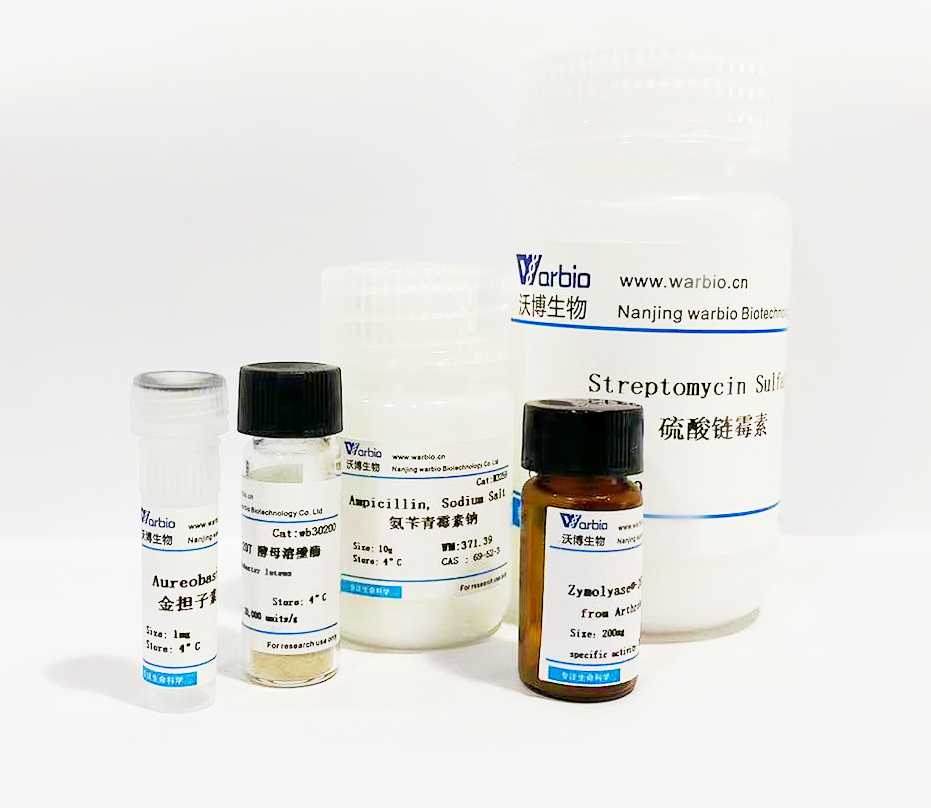

Latrunculin A (LAT-A,NSC 613011) 红海海绵素A
| 货号 | ICM1008 | 售价(元) | 615 |
| 规格 | 25ug | CAS号 | 76343-93-6 |
- 产品简介
- 相关产品
货号
名称
规格
价格
ICM1008-0025UG
Latrunculin A
25 UG
615
ICM1008-0100UG
Latrunculin A
100 UG
1668
产品简介:
肌动蛋白破坏用于研究体外(例如,迁移、胞吞作用)和体内(例如,肿瘤细胞侵袭)的细胞功能。Latrunculin A是一种具有生物活性的2-噻唑烷酮大环内酯,来源于海绵,可隔离G-肌动蛋白并阻止F-肌动蛋白装配。它以1:1的化学计量结合单体肌动蛋白,可用于在体外(Kd = 0.2微米)和细胞内(0.5微米,30分钟)阻断肌动蛋白聚合。[1]、[2]、[3] Latrunculin A (1-10微米)在十分钟内引起肿瘤细胞细胞骨架的解聚。[4]用latrunculin A (10微米)过夜处理细胞强烈抑制肌动蛋白合成。[5]延长的细胞处理阻断了地塞米松诱导的肌动蛋白细胞骨架的变化,而对细胞活力没有影响。[6]
产品性质:
Cas No.:76343-93-6
别名:红海海绵素A,LAT-A
化学名: (R)-4-((1R,4Z,8E,10Z,12S,15R,17R)-17-hydroxy-5,12-dimethyl-3-oxo-2,16-dioxabicyclo[13.3.1]nonadeca-4,8,10-trien-17-yl)thiazolidin-2-one
Canonical SMILES O[C@@](C1)([C@H]2NC(SC2)=O)O[C@H](CC[C@@H](/C=C\C=C\CC/C(C)=C\3)C)C[C@H]1OC3=O
分子式:C22H31NO5S
分子量:421.6
溶解度:25mg/mL in ethanol, or in DMSO
储存条件:Store at -20°C
注意事项:
为了您的安全和健康,请穿实验服并戴一次性手套操作。
References
[1]. Coué, M., Brenner, S.L., Spector, I., et al. Inhibition of actin polymerization by latrunculin A. FEBS Letters 213(2), 316-318 (1987).
[2]. Yarmola, E.G., Somasundaram, T., Boring, T.A., et al. Actin-latrunculin A structure and function. The Journal of Biological Chemisty 275(36), 28120-28127 (2000).
[3]. Loubéry, S., Wilhelm, C., Hurbain, I., et al. Different microtubule motors move early and late endocytic compartments. Traffic 9, 492-509 (2008).
[4]. Hayot, C., Debeir, O., Van Ham, P., et al. Characterization of the activities of actin-affecting drugs on tumor cell migration. Toxicology and Applied Pharmacology 211, 30-40 (2006).
[5]. Lyubimova, A., Bershadsky, A.D., and Ben-Ze'ev, A. Autoregulation of actin synthesis requires the 3'-UTR of actin mRNA and protects cells from actin overproduction. Journal of Cellular Biochemistry 76, 1-12 (1999).
[6]. Liu, X., Wu, Z., Sheibani, N., et al. Low dose latrunculin-A inhibits dexamethasone-induced changes in the actin cytoskeleton and alters extracellular matrix protein expression in cultured human trabecular meshwork cells. Experimental Eye Research 77, 181-188 (2003).

